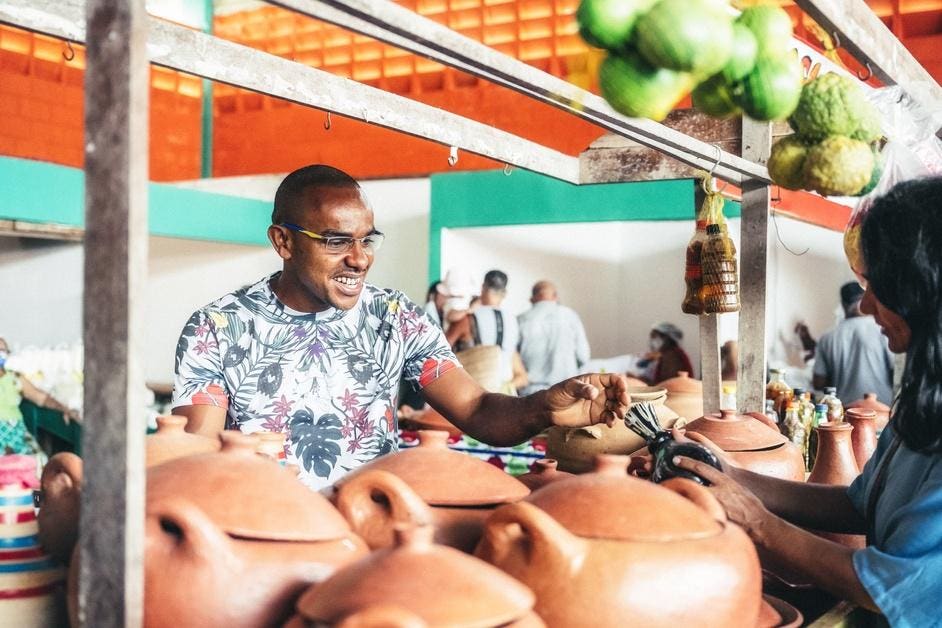Jean Paul Wardy, Founder and CEO, CenterCal Properties.
It is one thing to choose to shop, socialize and work remotely, but quite another to be forced into a largely digital existence due to extenuating circumstances. Since the lockdown days of the pandemic, we all appear to have emerged with a greater appreciation for social interactions and in-person experiences that add color and enrichment to our lives. Although it would seem that real estate developers and managers would be slow to pivot and adjust to changing consumer priorities, given the very fixed nature of their properties, many are adopting an innovative community-centric approach to not only survive but thrive.
As consumers seek lifestyles that promote well-being—both personal and environmental—as well as meaningful connections, real estate professionals are reassessing and recalibrating their offerings. Among the developments are mixed-use and high-quality, grocery-anchored projects. Once thought to be on the decline—thanks to the rise of online retail and, later, pandemic effects—I’m seeing these centers experiencing a renaissance as they become vibrant, desirable places to shop, dine, play, work and live. A key component of some of the most successful centers is a commitment to incorporating local art and cultural elements in a way that creates a sense of place and fosters stronger engagement.
The Role Of Art And Cultural Activities In Promoting Connection
A study commissioned by the Knight Foundation found that “people with access to arts and cultural activities are more attached to their communities—in both feeling and action.” These amenities were shown to have the unique quality of both potentially increasing “feelings of satisfaction and lifestyle fit” and “investment of time and resources in the community.” Further, people with access to recreational and safe places for work and play were more satisfied with and likely to stay in their community.
Another study, supported in part by the National Endowment for the Arts, found that “place-based arts and cultural practices, or creative placemaking, can help grow social cohesion to encourage community well-being.” Such creative placemaking can run a gamut of programming developed to bring people together, from pop-up galleries and maker markets to special events and performances to indoor and outdoor art installations. Finding ways to share the diversity of experiences and perspectives within a community can help form connections, promote empathy and lead to greater understanding. Likewise, creating opportunities to tell a community’s shared story can highlight commonalities and strengthen ties.
Leading With Authenticity
Management teams behind mixed-used developments can honor and celebrate local arts and culture in various ways, but being authentic to the people they reach and the place in which they operate is critical. Allocating space to these attractions can emphasize an investment in the community and in creating a unique destination.
Boston’s Assembly Row, for example, weaves regionally inspired restaurants and outposts of area craft beverage producers into its offerings, giving guests an opportunity to experience true local flavor and dining culture. Additionally, a monthly outdoor pop-up market brought 30 small businesses to the property to showcase locally made artisan wares. Even in times when traditional retail space is scarce, underutilized outdoor spaces may be able to accommodate engagement-building activations that resonate with the clientele.
Danbury Fair in Connecticut found another way to tap into shared values while providing an outlet for artistic expression. The shopping center partnered with Ben Bell’s Project, a nonprofit with a mission to spread kindness, to solicit drawings from community members depicting kindness. Winning drawings became the inspiration for mosaics, displayed and later auctioned at the center for the charity. Taking a page from Danbury Fair’s book, mixed-use developers can support local artists and add interest to their destinations with some creative thinking, from introducing new sources of inspiration to displaying works of art in unexpected places.
Creative place-making is an ongoing process, and establishing a regular cadence of community events and activities reinforces a development’s integral role in fostering connection and engagement. At 2ND & PCH in Long Beach, California (one of our properties), the management team is continuously considering its patrons and the types of events and interactions that could generate excitement. Activations have included a two-day Long Beach Strong Beach fitness party supporting athletics at local schools, an official Lunar New Year event in partnership with Sister Cities of Long Beach and salsa lessons during Dancing Underneath the Stars. The variety of events geared to diverse ages and interests can inspire the community to return and experience something new.
In closing, simply building a mixed-use development with space to accommodate live, work and play is not enough to ensure a property’s success. People are seeking personalized experiences and a sense of community that together enhances their quality of life, whether through close proximity to shops and restaurants or easy access to artistic, cultural and other recreational pursuits. By orienting themselves around the consumers’ values and preferences, mixed-use developers can develop authentic experiences and energetic environments that I expect will capture Americans’ imaginations for years to come.
Forbes Business Council is the foremost growth and networking organization for business owners and leaders. Do I qualify?
Read the full article here










